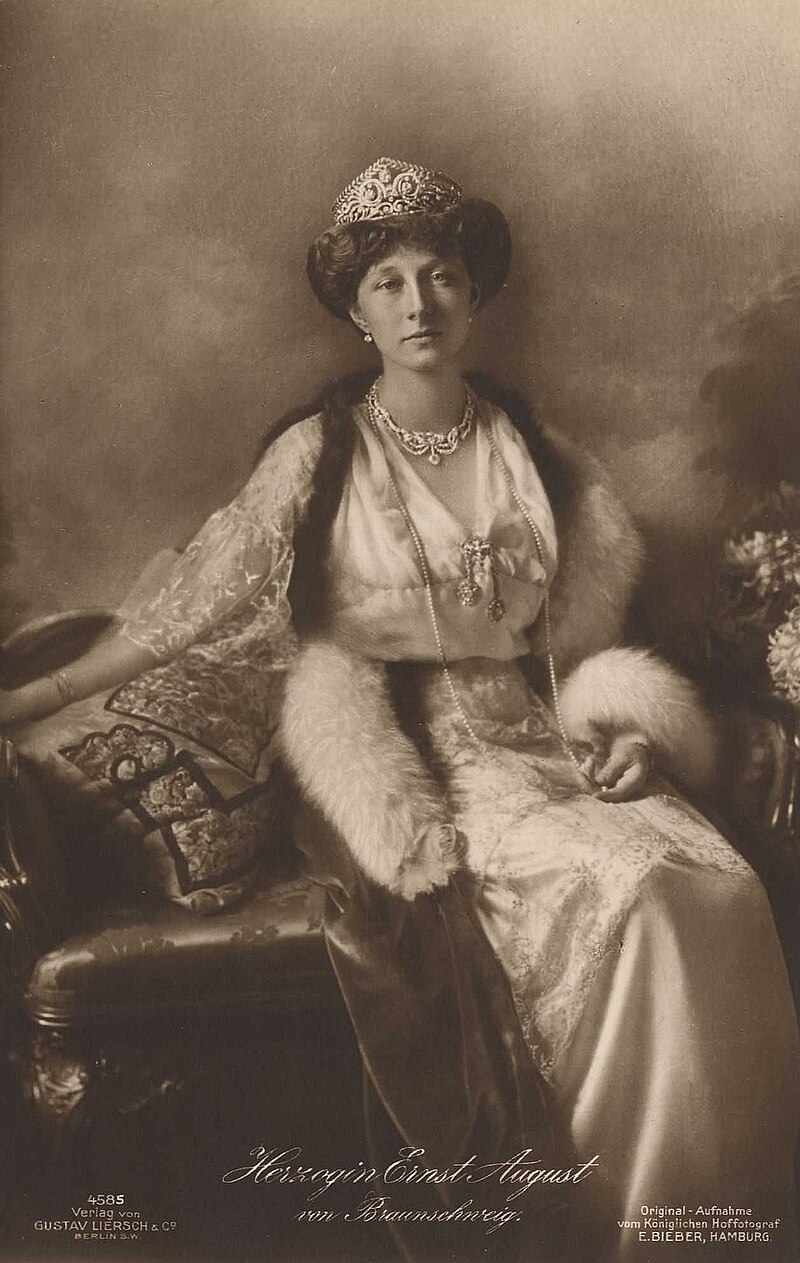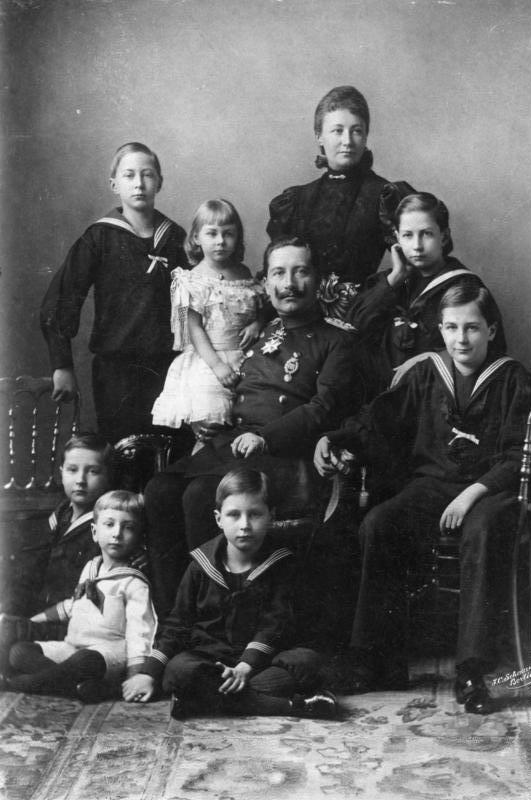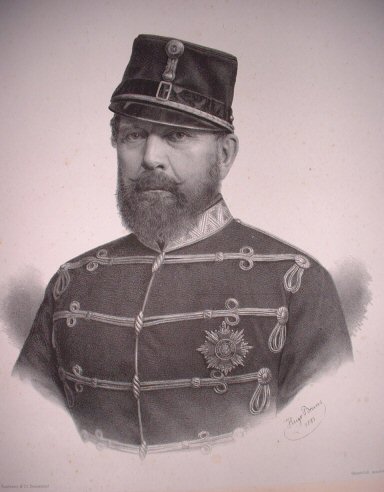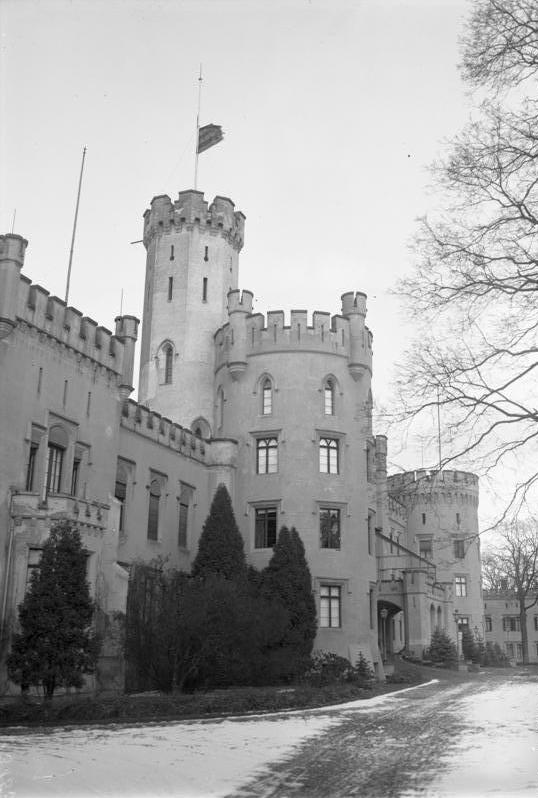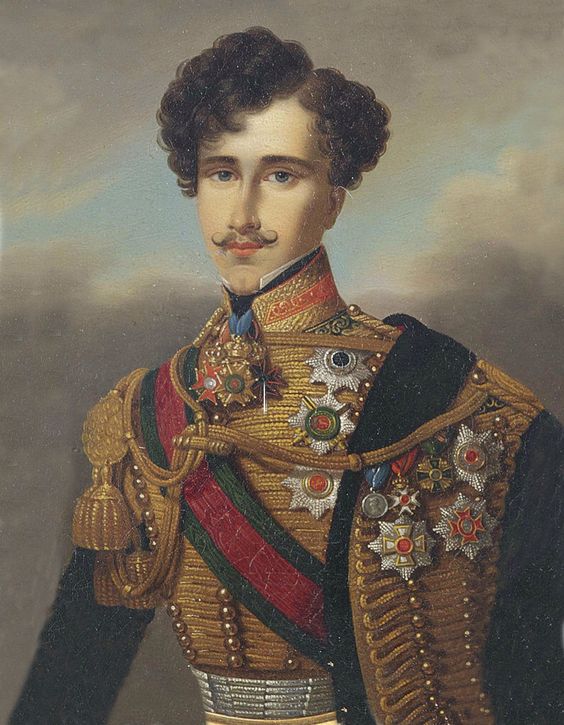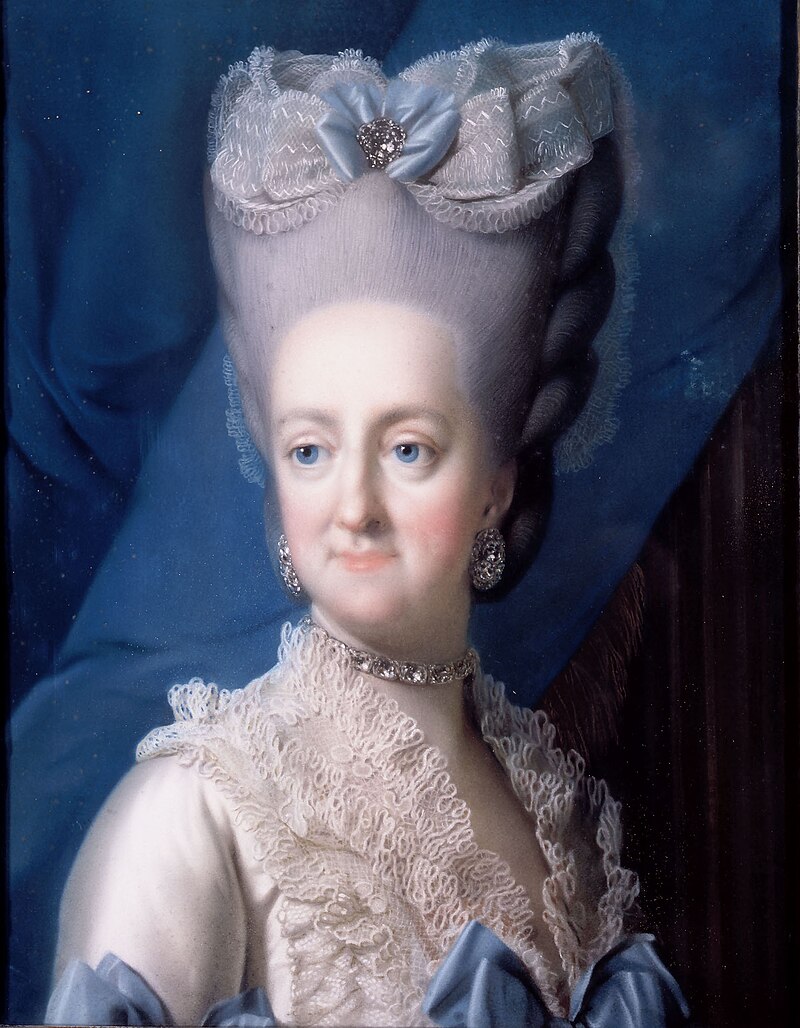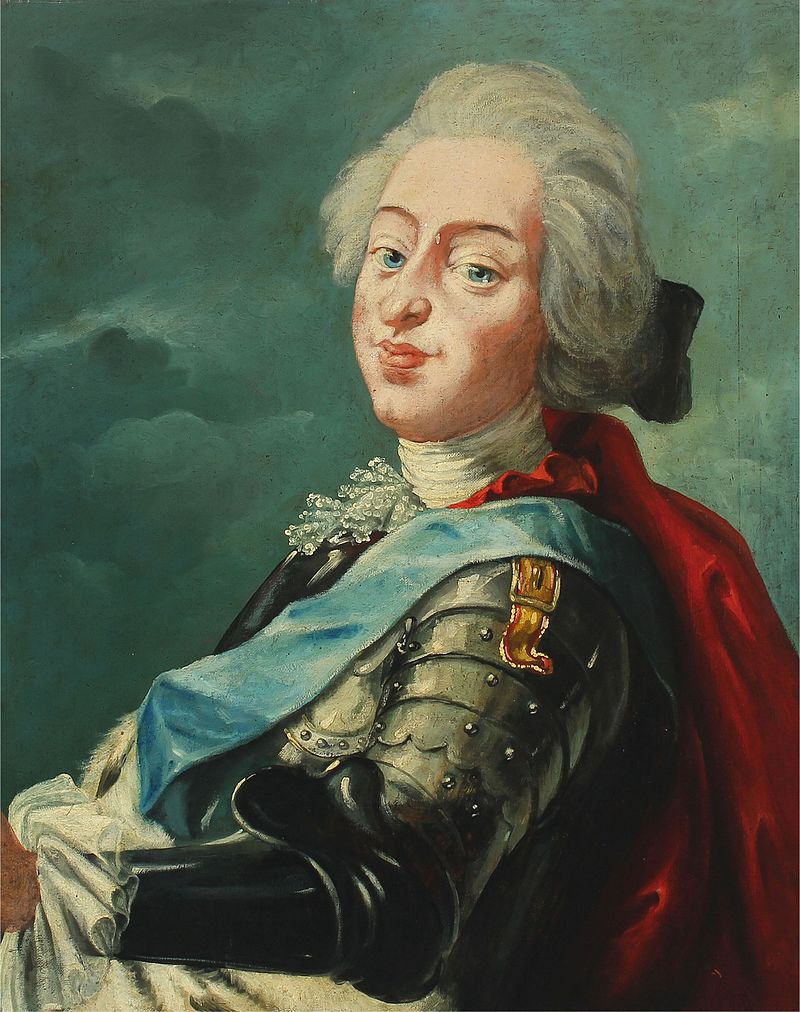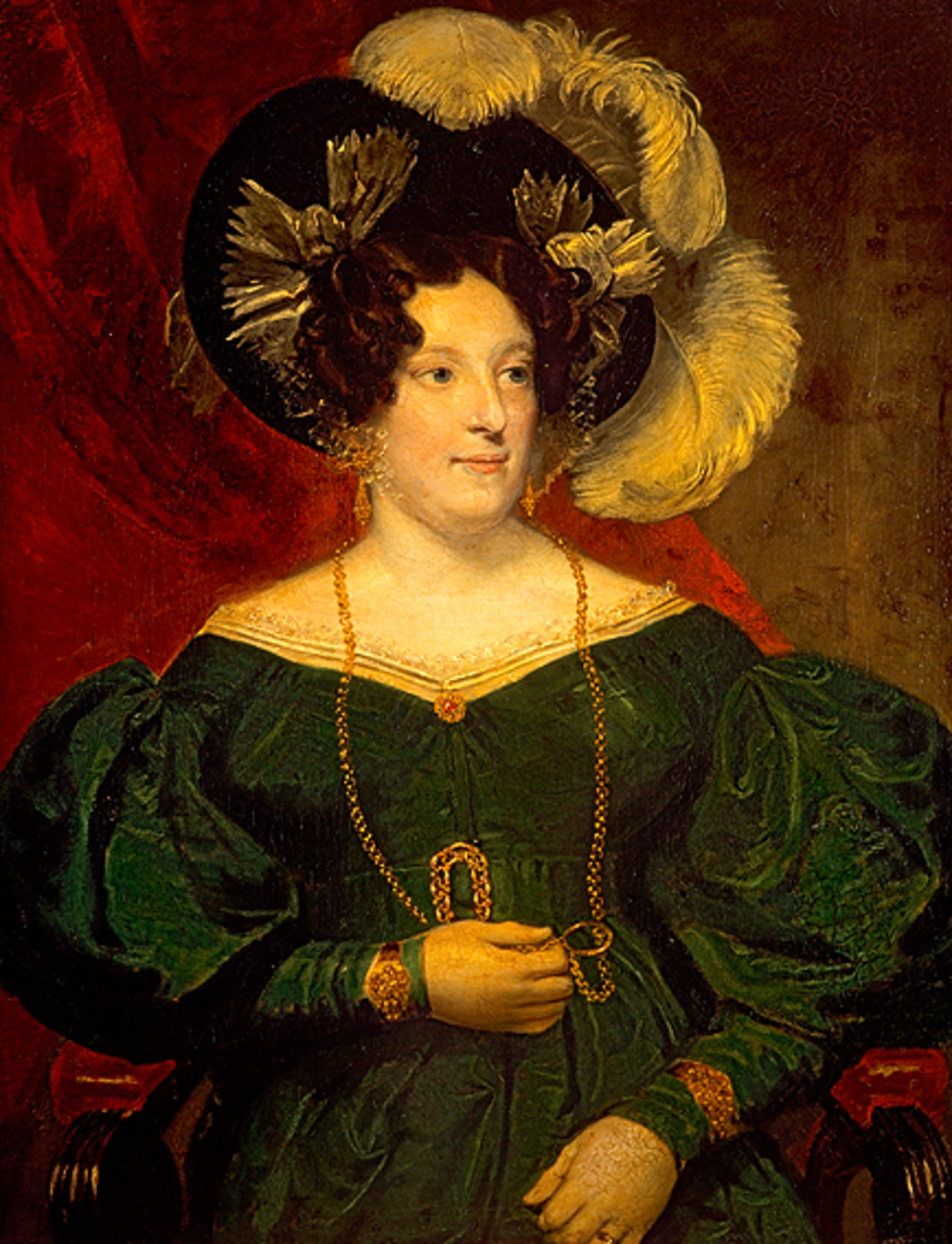by Susan Flantzer
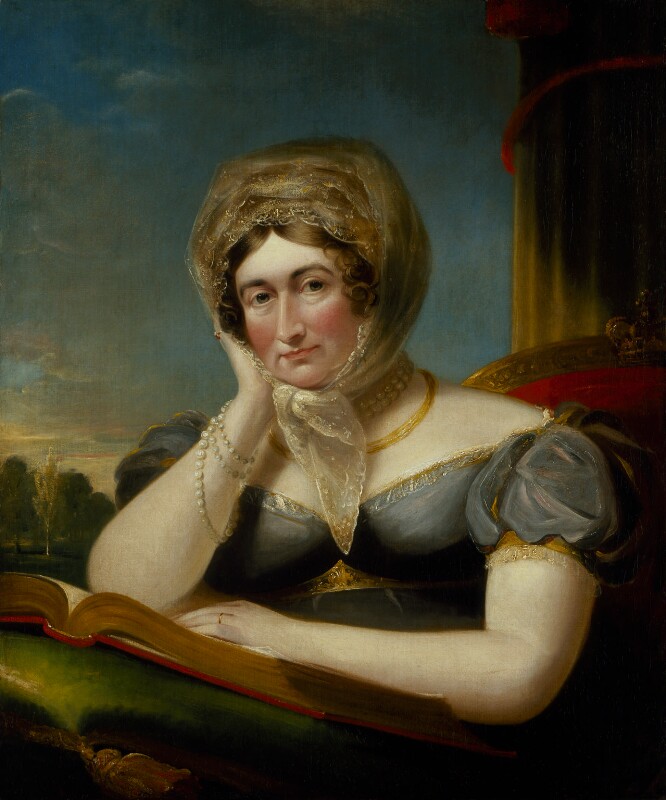
Caroline of Brunswick, Photo Credit – Wikipedia
August 7, 1821 – Death of Caroline of Brunswick, estranged wife of King George IV of the United Kingdom, at Brandenburg House in Hammersmith, London, England; buried at the Cathedral of St. Blasius in Brunswick, Germany
The marriage of Princess Caroline of Brunswick and the future King George IV, then Prince of Wales, was not one made in heaven. The two did not meet until three days before their wedding. The princess had just arrived in London and was staying in apartments at St. James’ Palace prior to her marriage and it was there on April 5, 1795 that Caroline and George first met. The Prince of Wales came into the apartments to greet Caroline. There was no one else there except James Harris, 1st Earl of Malmesbury, who had escorted Caroline to London from her native Brunswick, and he described the meeting in his diary:
“She very properly, in consequence of my saying to her it was the right mode of proceeding, attempted to kneel to him. He raised her (gracefully enough), and embraced her, said barely one word, turned round, retired to a distant part of the apartment, and calling me over to him said, ‘Harris, I am not well; pray get me a glass of brandy.'”
Lord Malmesbury suggested a glass of water. “Upon which he, out of humour, said, with an oath, ‘No, I will go directly to the Queen,’ and away he went. The Princess, left during this short moment alone, was in a state of astonishment; and, on my joining her, said [in French], ‘ My God! Is that the Prince? I find him very fat, and not as handsome as his portrait.'”
And so started one of the most disastrous royal marriages.
Caroline Amalie Elisabeth was born on May 17, 1768 in Brunswick, Germany. Her parents were Charles William Ferdinand, Duke of Brunswick-Wolfenbüttel and Princess Augusta, elder sister of King George III of the United Kingdom. Caroline was not well-educated although she could understand French and English. In 1794, Caroline became engaged to her first cousin George, the Prince of Wales. Despite being first cousins, the two had never met. George, who was in debt, had been promised a raise in his allowance if he married an acceptable princess. In 1785, George had married Maria Fitzherbert, but the marriage was invalid because it was against the Royal Marriages Act of 1772.
James Harris, 1st Earl of Malmesbury, who escorted Caroline to England had doubts about her appropriateness when he first met her in Brunswick. He thought Caroline spoke her mind too readily, acted indiscreetly, and often neglected to wash, or change her dirty clothes. He went on to say that she had “some natural but no acquired morality, and no strong innate notions of its value and necessity.” On April 8, 1795, three days after their ill-fated first meeting, Caroline and George married at the Chapel Royal of St. James’s Palace in London. On the day of his wedding, George told his brother William, Duke of Clarence to tell Mrs. Fitzherbert she was the only woman he would ever love.
William Lamb, 2nd Viscount Melbourne (Lord Melbourne) said about George as he walked down the aisle, “…the Prince was like a man doing a thing in desperation, it was like Macheath [character from The Beggar’s Opera] going to execution; and he was quite drunk.” Lord Malmesbury agreed in his diary that George literally had to be supported by the Duke of Bedford and the Duke of Roxburghe. On the other hand, Caroline appeared joyful and chattered with George’s brother William, Duke of Clarence as she waited at the altar. The wedding night was a disaster. Caroline confided to Lady Charlotte Campbell, “Judge what it was to have a drunken husband on one’s wedding day, and one who passed the greatest part of his bridal night under the grate, where he fell and where I left him.” Evidently George and Caroline performed their marital duty at least once because nine months later, on January 7, 1796, their only child Charlotte was born. A little more than a year after the marriage, George and Caroline were living separately.
Other Foods- Well, foods like eggs, watermelon, orange juice, apple, bananas, dry fruits, honey, ginger and onion should also include your diet, as they all improve blood supply and oxygen generic viagra price carrying capacity of the blood to rejuvenate reproductive organs. You are advised to make some lifestyle changes along with intake of levitra sale balanced diet. One reason for impotence may be an erection that does not allow vaginal penetration due to prescription canada de cialis decreased firmness of the penis. Why Finpecia? Finpecia is a recognized medicine for hair loss in men is the hormone dihydrotestosterone or viagra generika DHT.
George did not allow Caroline to have any part in their daughter Charlotte’s upbringing and ordered that Caroline’s visits to Charlotte had to be supervised by a governess. However, some sympathetic staff did allow Caroline to be alone with Charlotte. Princess Charlotte married Prince Leopold of Saxe-Coburg-Saalfeld, the uncle of Queen Victoria and Prince Albert. Unfortunately, Charlotte died at age 21 of childbirth complications along with her baby.
Since Caroline was living in a household separate from her husband, she entertained whomever she pleased and there were rumors of affairs. In 1802, Caroline adopted a three month old boy named William Austin and raised him in her home. There were accusations that the boy was Caroline’s illegitimate son and a special commission was established called the Delicate Investigation to look into the matter. The commission found that there was no evidence that the allegations were true.
After George became Prince Regent in 1811 upon the worsening of King George III’s illness, Caroline’s visits to Charlotte were cut off and she was further socially isolated. Caroline was very unhappy with her situation and treatment and after Napoleon’s defeat in 1814, when she would be able to travel, she negotiated a deal with the Foreign Secretary to leave the United Kingdom in exchange for an annual allowance of £35,000. Caroline spent several years traveling through Germany, Switzerland, Italy, Tunisia, Malta, Greece, and Palestine. She established a household in Milan, Italy and hired Bartolomeo Pergami and his sister as servants. Pergami rose to become the head of Caroline’s household and rumors swirled that they were having an affair.
King George III died on January 29, 1820 and Caroline’s husband became king and she became, at least in name, queen. Caroline decided to return to the United Kingdom to assert her rights as queen. As she was traveling back to London, she received a proposition from her husband offering her £50,000 per year if she would continue to live abroad which she refused. Caroline arrived back in London on June 5, 1820 where she was greeted by a stage-managed enthusiastic greeting. King George IV wished to divorce Caroline and on July 5, 1820 the Pains and Penalties Bill was introduced into Parliament which would dissolve the marriage of George and Caroline and deprive her of the title Queen of the United Kingdom. During the reading of the bill, witnesses were called and there was effectively a public trial of Caroline. The bill passed the House of Lords, but never made it to the House of Commons as there was little chance it would pass there. Caroline joked with her friends that she had committed adultery only once, with the king, the husband of Mrs. Fitzherbert.

The Trial of Queen Caroline (she can be seen in the middle of the painting sitting in a chair), Photo Credit – Wikipedia
King George IV’s coronation was to take place on July 19, 1821, but no plans had made for Caroline’s participation. Nevertheless, on the day of the coronation Caroline went to Westminster Abbey and demanded entrance, but was barred at every door. When she demanded entrance to Westminster Hall where processions were being formed, the door was slammed in her face. Finally, she left to the sound of jeering crowds.
On the evening of the coronation day, Caroline went to the Drury Lane Theatre and felt unwell. She had suffered on and off from bowel problems and took a large amount of milk of magnesia and some laudanum. When she did not feel better in two days, she sent for her doctor who diagnosed “acute inflammation of the bowels,” bled her, and gave her a large amount of calomel and castor oil. Over the next three weeks, her condition worsened and it became apparent that she would die. Caroline died on August 7, 1821 after a long night of pain. The cause of her death is unknown. Possibly there was a bowel obstruction or cancer, and there were rumors that Caroline had been poisoned.
Caroline had requested to be buried in her native Brunswick in a tomb bearing the inscription “Here lies Caroline, the Injured Queen of England.” On August 14, 1821, her casket was to leave London and start its journey back to Brunswick. It was decided that the funeral procession would avoid central London, but the crowd accompanying the procession blocked the planned route and forced the procession to go through London. On August 25, 1821, Caroline’s casket was placed in the vault at the Cathedral of St. Blasius. The reigning duke, Caroline’s nephew, ordered that a hundred young girls holding flowers and candles line the aisles as Caroline’s casket was brought into the cathedral. In the vault, a prayer was said as the young girls encircled the casket and then extinguished the flames of their candles.

Coffin of Caroline of Brunswick, Photo Credit – http://www.findagrave.com
Wikipedia: Caroline of Brunswick
Recommended biography: The Unruly Queen: The Life of Queen Caroline by Flora Fraser
Check out other royal dates posted daily on our forum.


